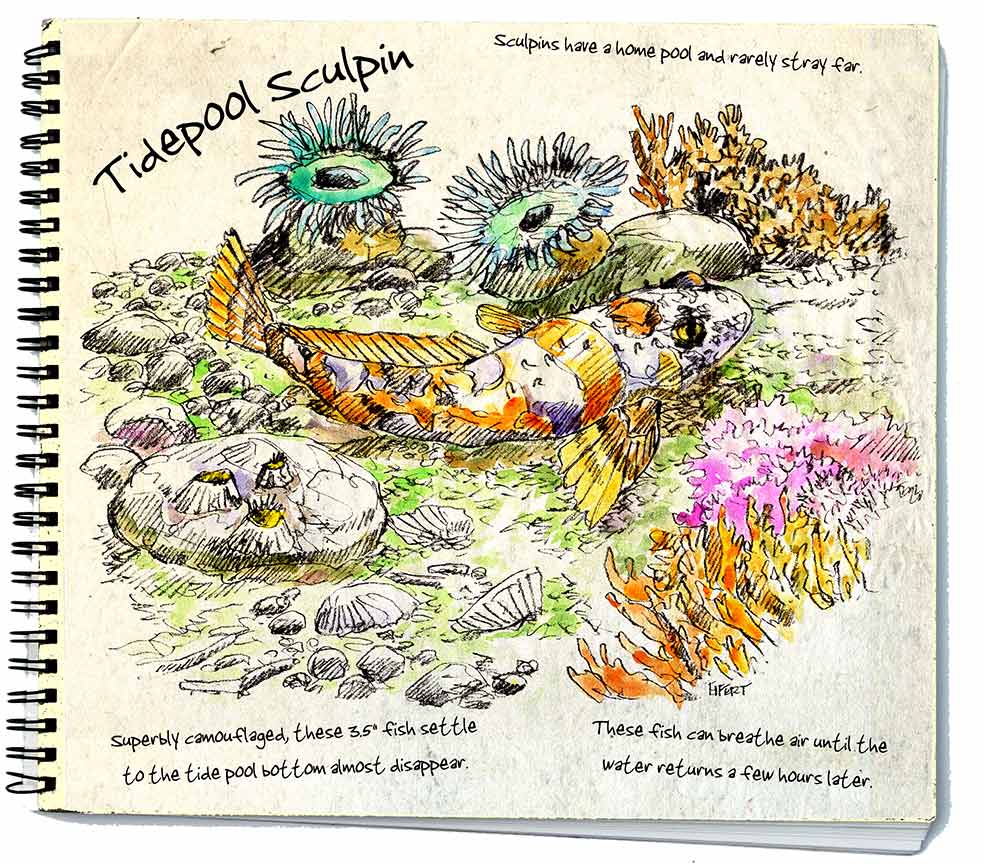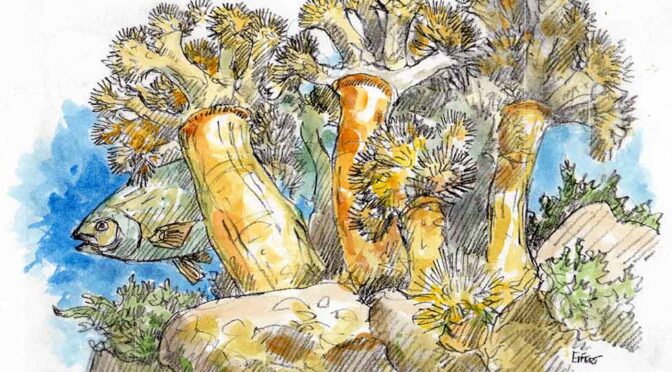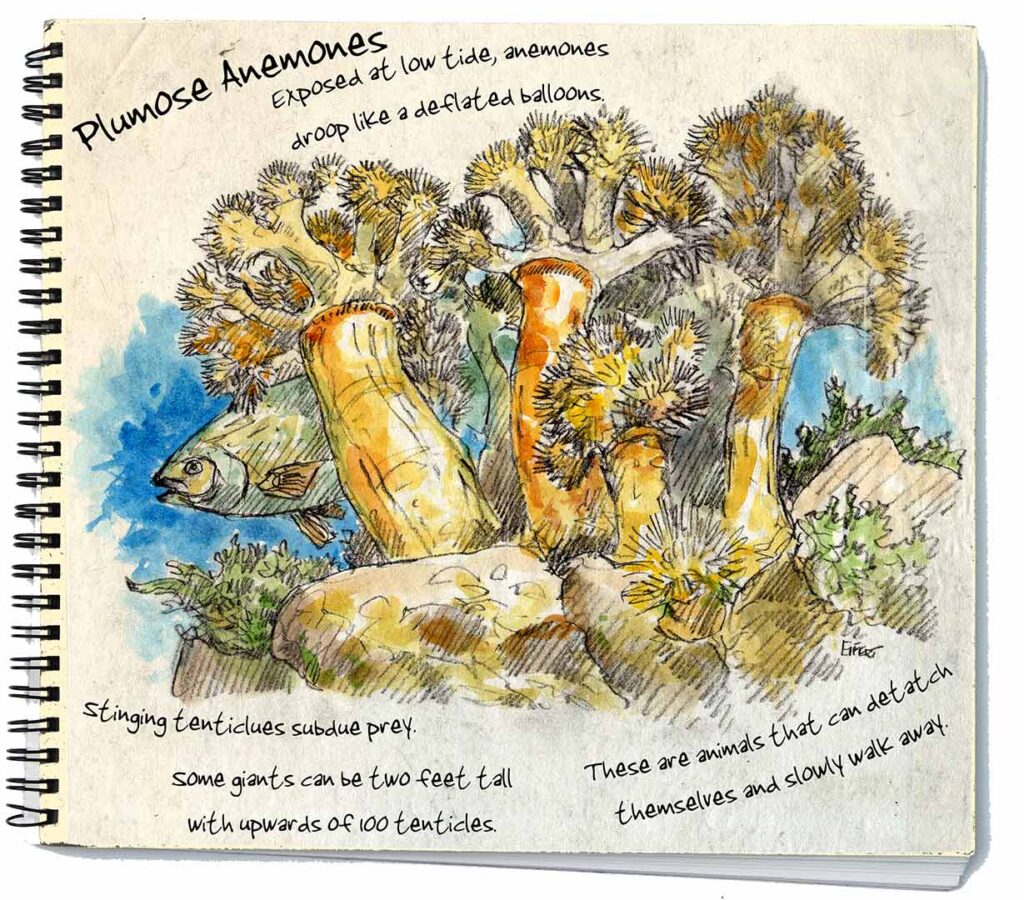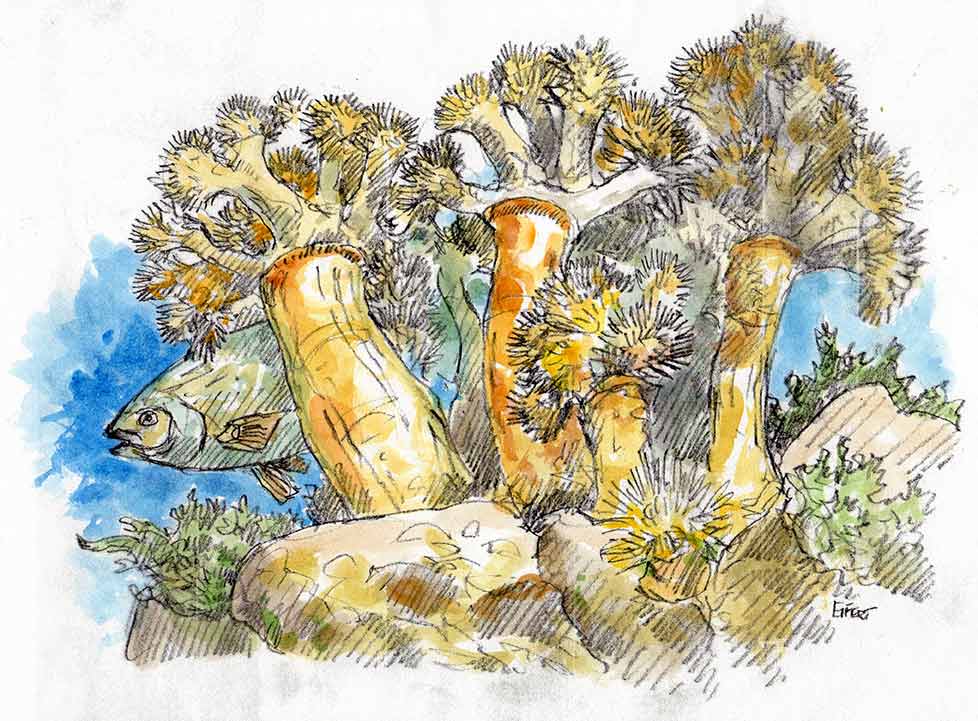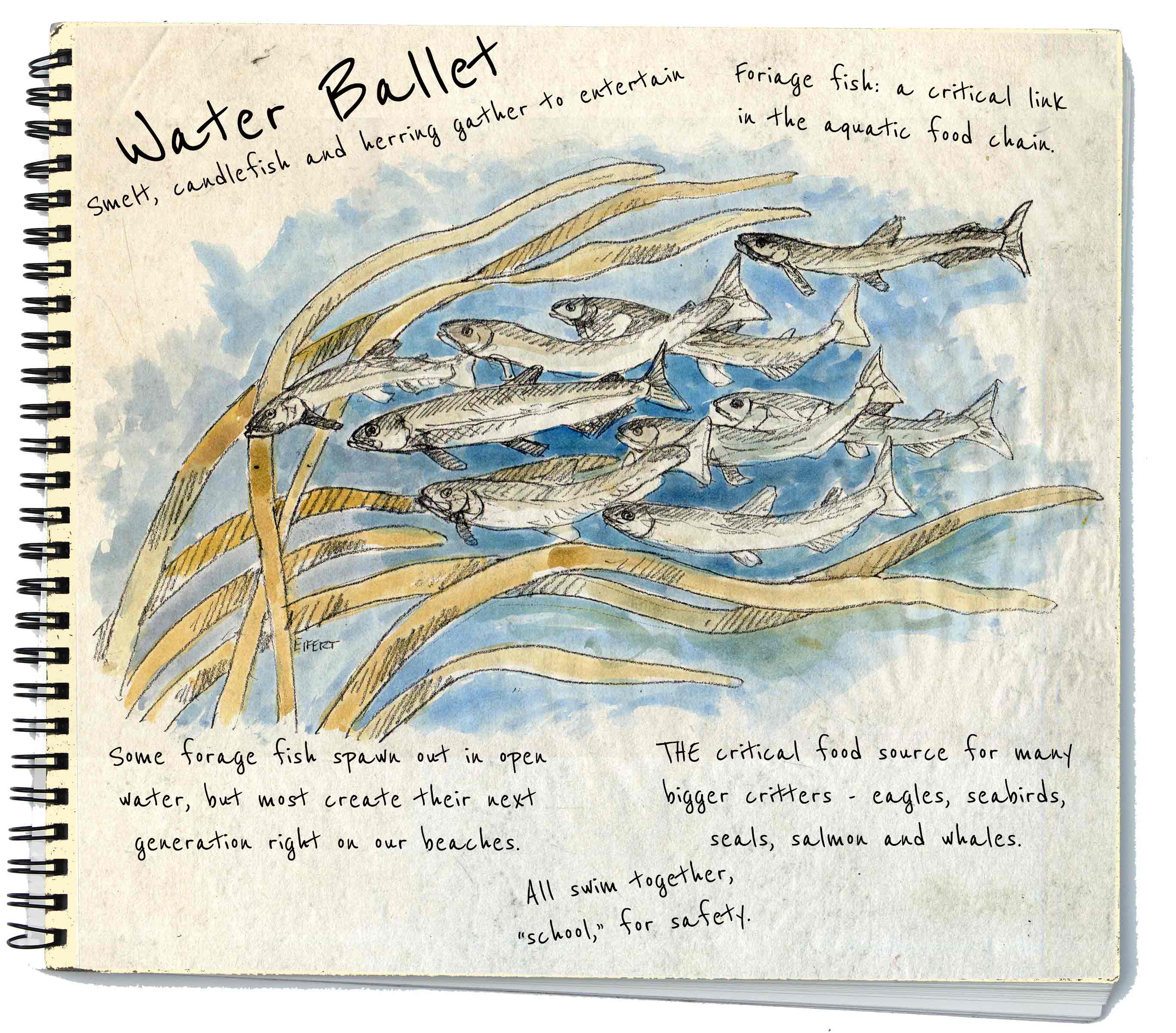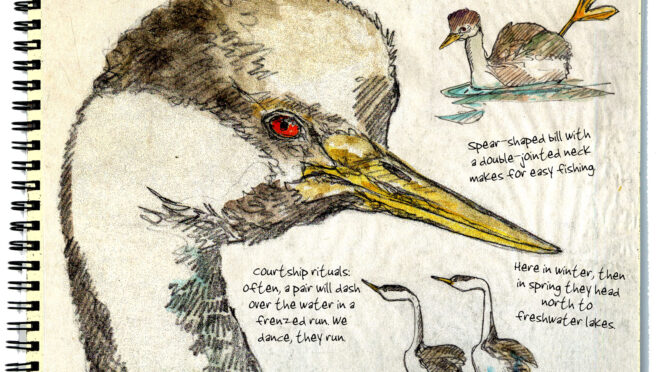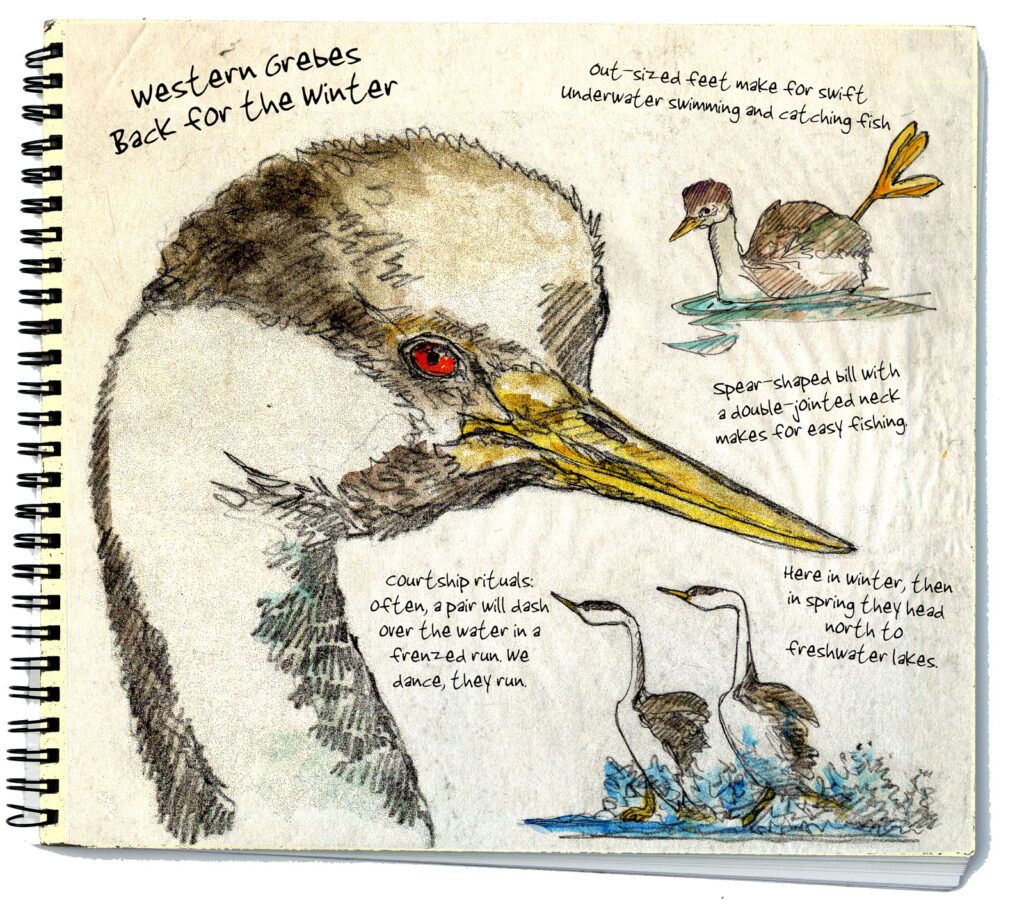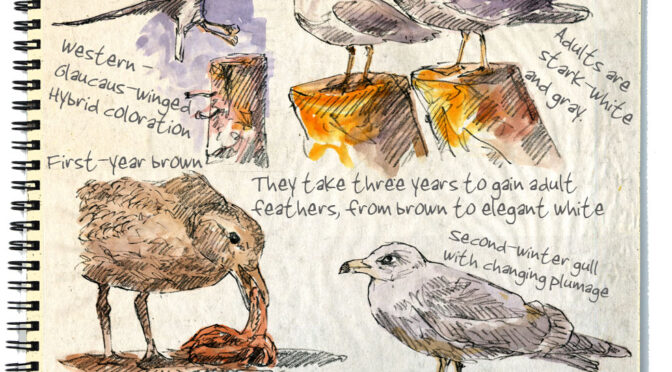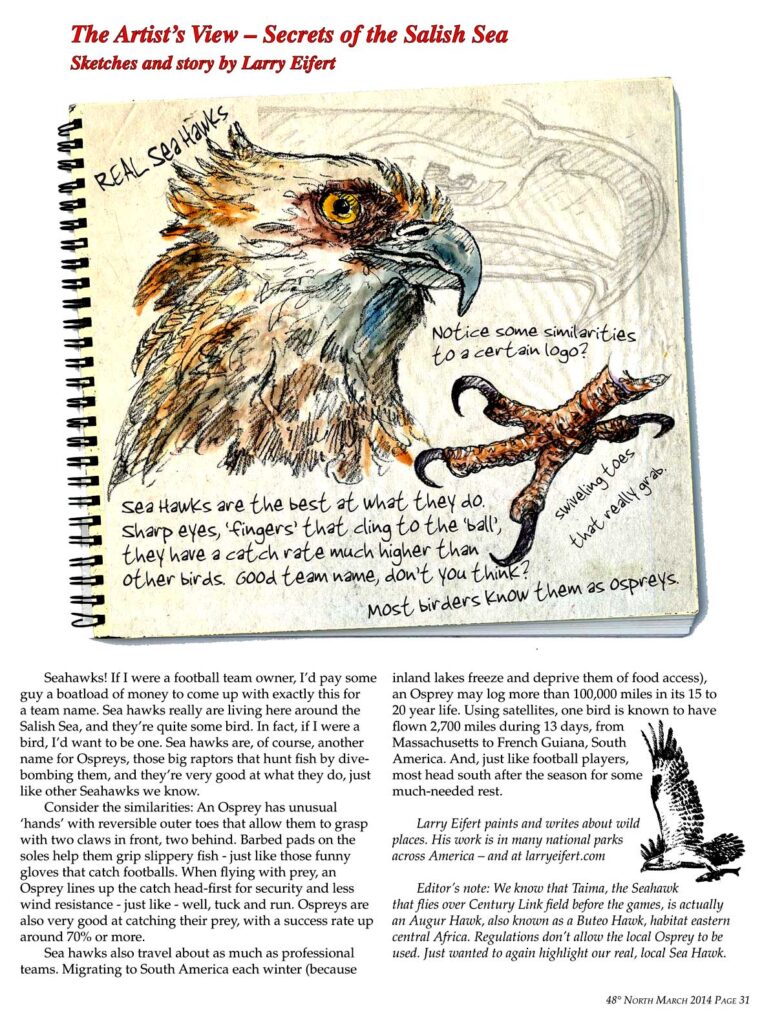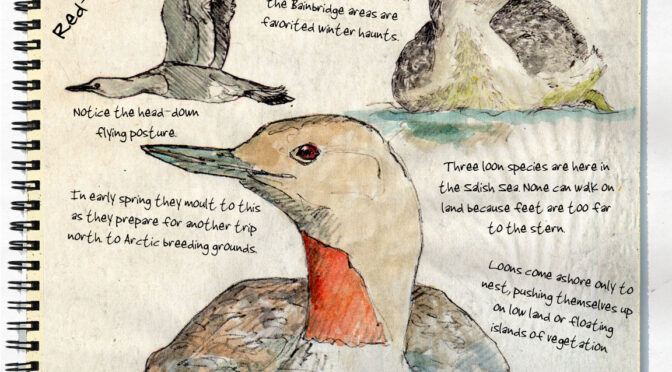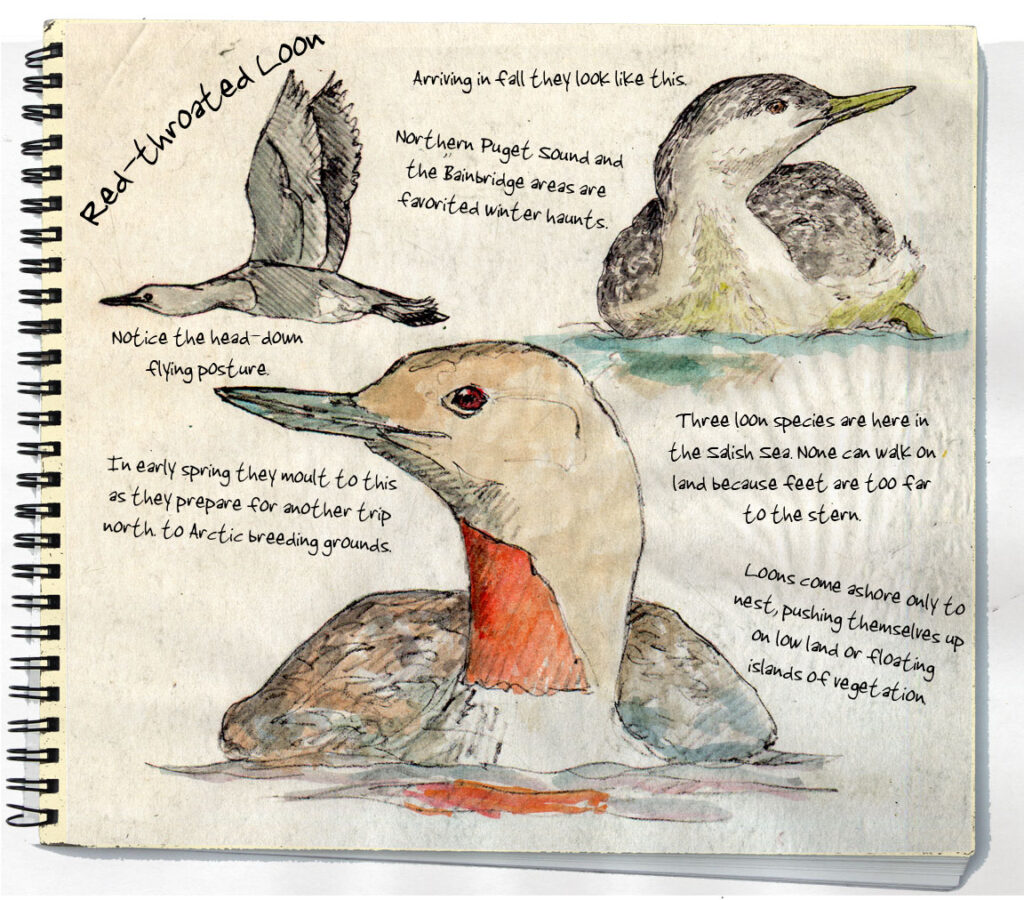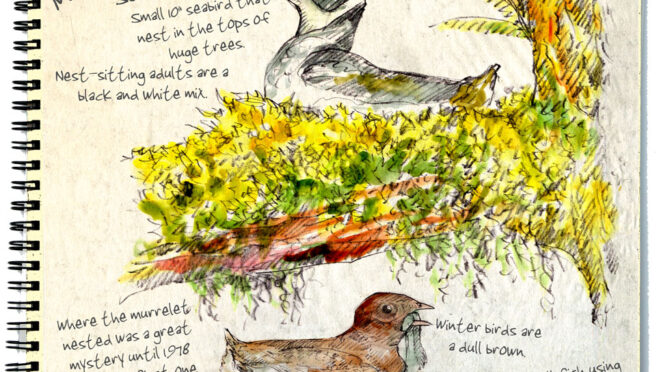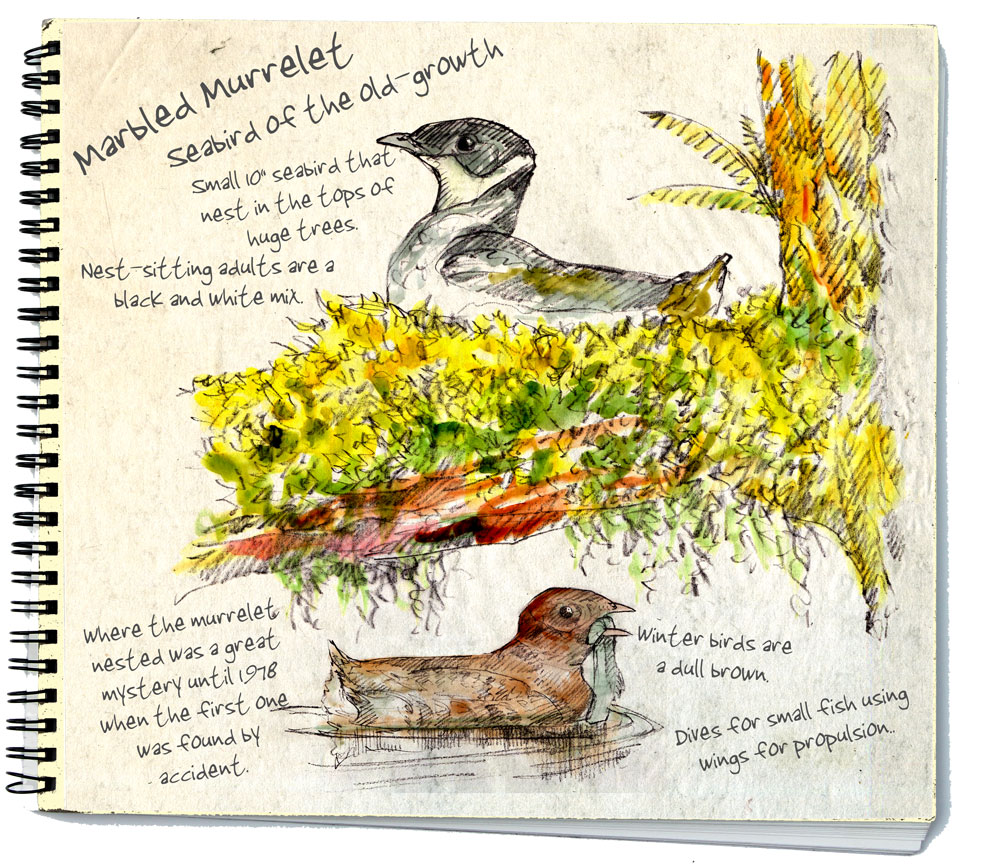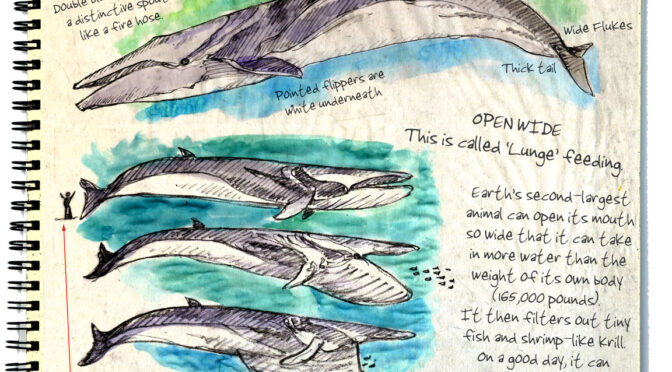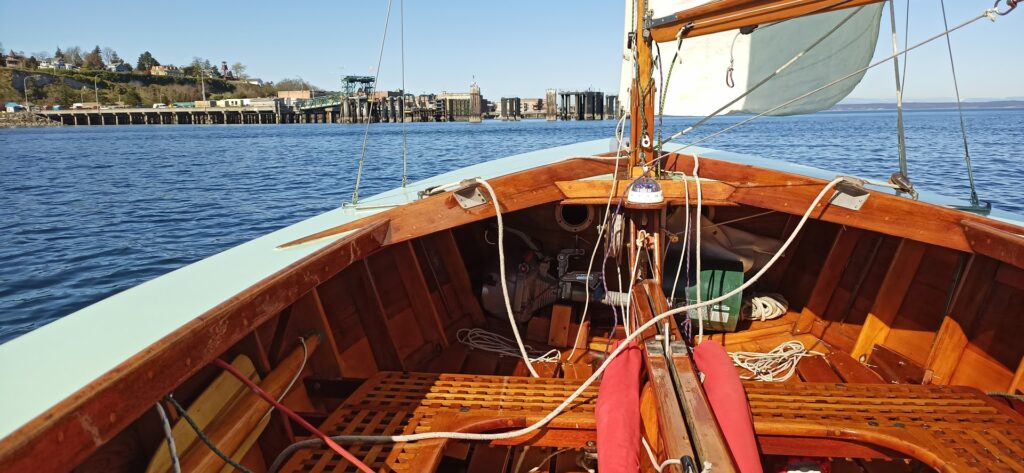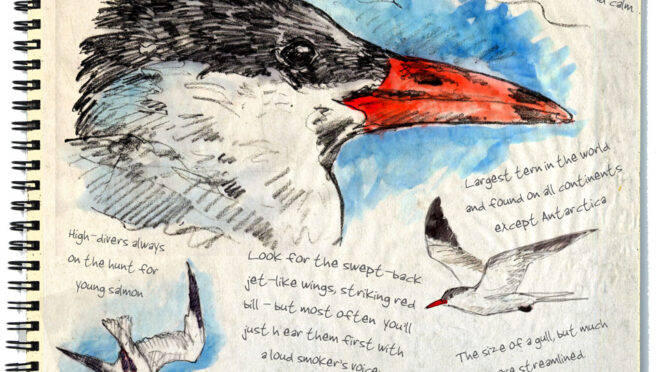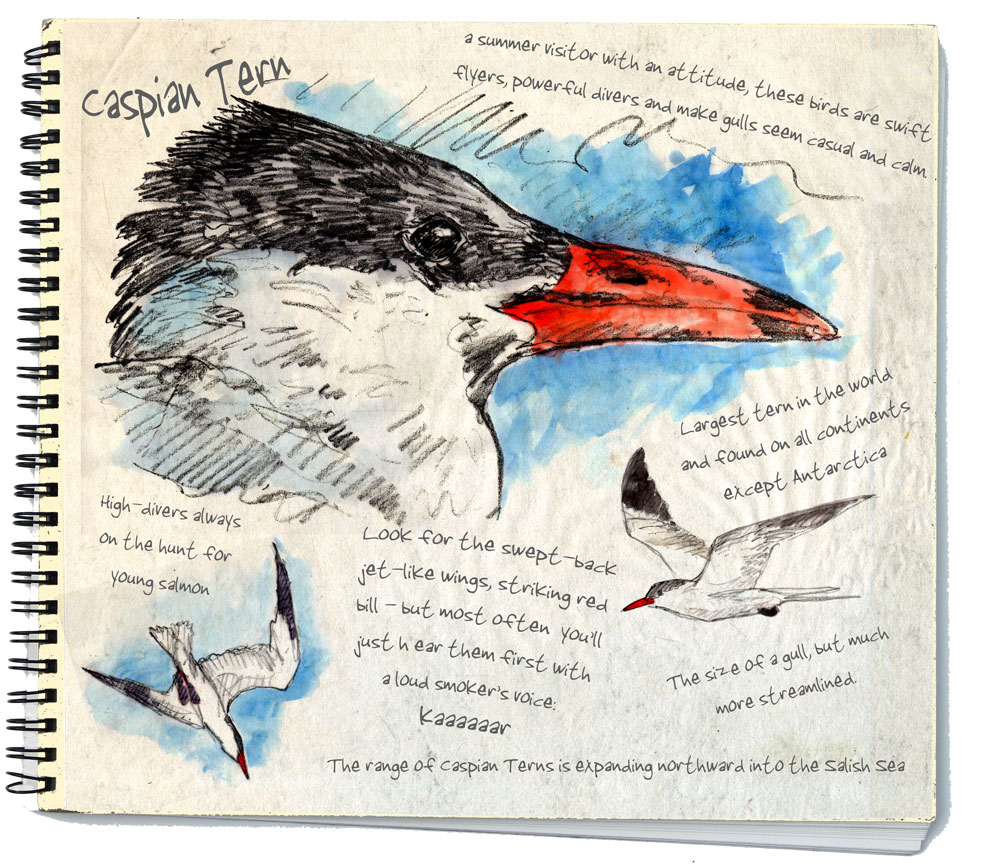Never got around to posting this in the midst of a bunch of much bigger paintings, but this was my September magazine page for 48 North magazine. It’s late to post here, but I always want to leave a record of my stuff to keep track of it all.
Sculpins: a quick little color study of these tiny fish that live in rocky tidepools in the Northwest. There are many reasons to make these little guys (smaller than your thumb) featured here, but my favorite is the rather homebody lifestyle they have. Simply put, they like where they live and never stray far. Sure, they can live out of the water through an entire tidal change, and sure, they check out other pools as far away as a football field, but they always return home, and to the same pool!
Here’s a closeup of the little guy, loose pencil and watercolor. I don’t give myself much time on these and I like the process because it’s so very different than many of my bigger projects that are tight and detailed. Compare this with the 500 square feet of Hoh Rain Forest paintings I was doing at the same time I did this little sculpin and you can imagine the relief of starting and finishing something in the same session. Ahhh.
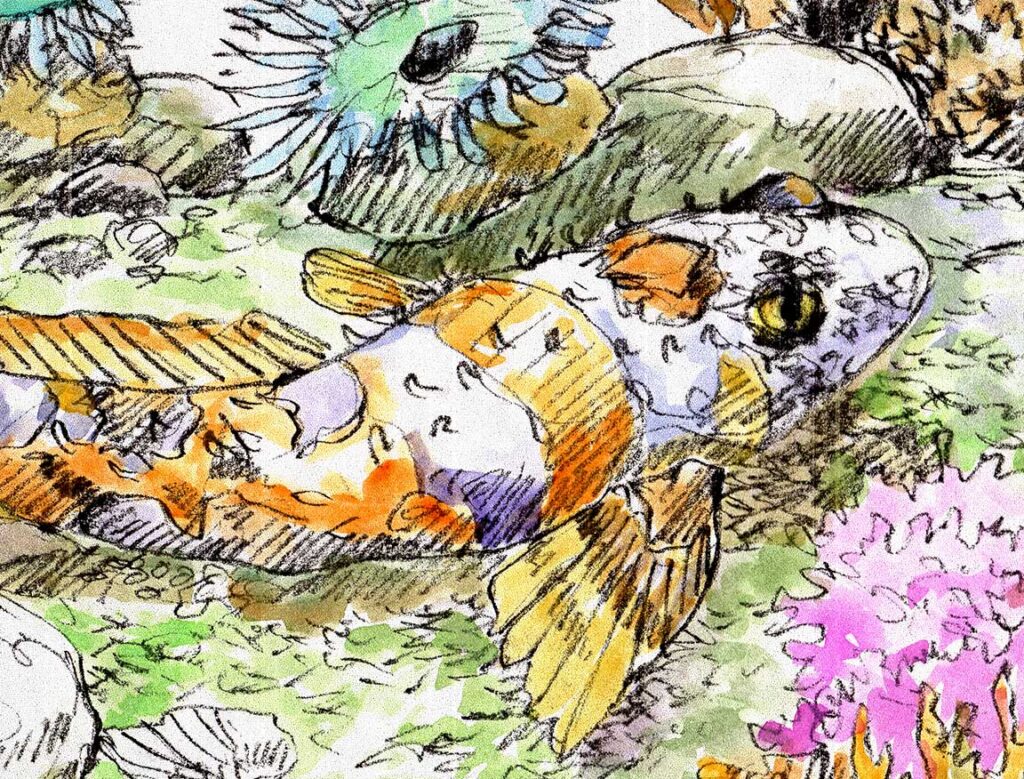
And here is the text that went with it in 48 North magazine:
Go ashore – poke around tidepools, and chances are good you’ll find this little sculpin. It might take a bit of looking, because their habit of secrecy means staying put, not moving a fin and waiting for you to pass by. Superbly camouflaged, these small 3.5” fish settle to the tide pool bottom and blend in so well with sand, crushed shells and bits of seaweed they just disappear. Put your hand over the water and, like a flash, they shoot forward to a safer place. It’s still the same tidepool, so just watch them flash, settle, and then have a good look. As the tide returns, sculpins could move about to other areas, but they have a home pool and rarely stray far. If moved, say 300 feet to another tidepool, they return to their original pool, not unlike salmon returning to spawn to their home stream.
There are five sculpin species here and all are carnivores, hunting small crustaceans and seaworms. In turn, they are hunted by all sorts of predators from herons to otters, so sharp spines that take the place of scales are protection as they live in a confined space with no escape. Sculpins occasionally get stranded out of water at low tide, beneath seaweed or under rock ledges. Not to worry. These fish can breathe air until the water returns a few hours later. Other fish can do this, too, and it begs the comparison to when fish crawled out of the water for good and took to the land in an evolutional move that eventually became us. Think about that next time you see one of these little fish. Is that you, grand dad?
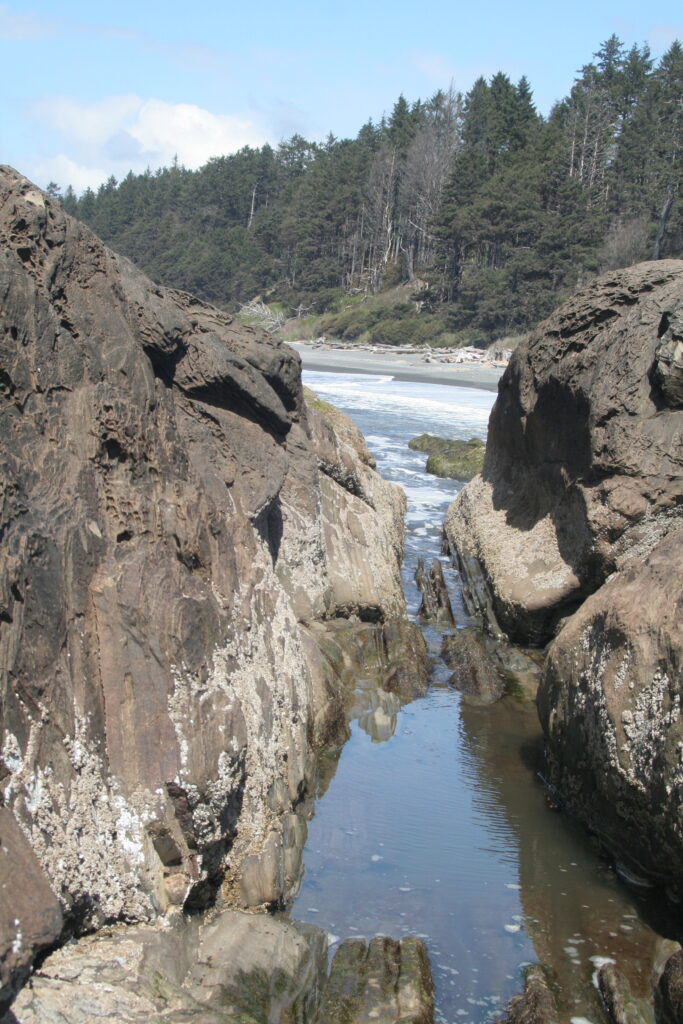
This is the tidepool where I did much of the research for this story, Beach 4 at Olympic National Park. It’s one of our favorites for a low-tide poking around.
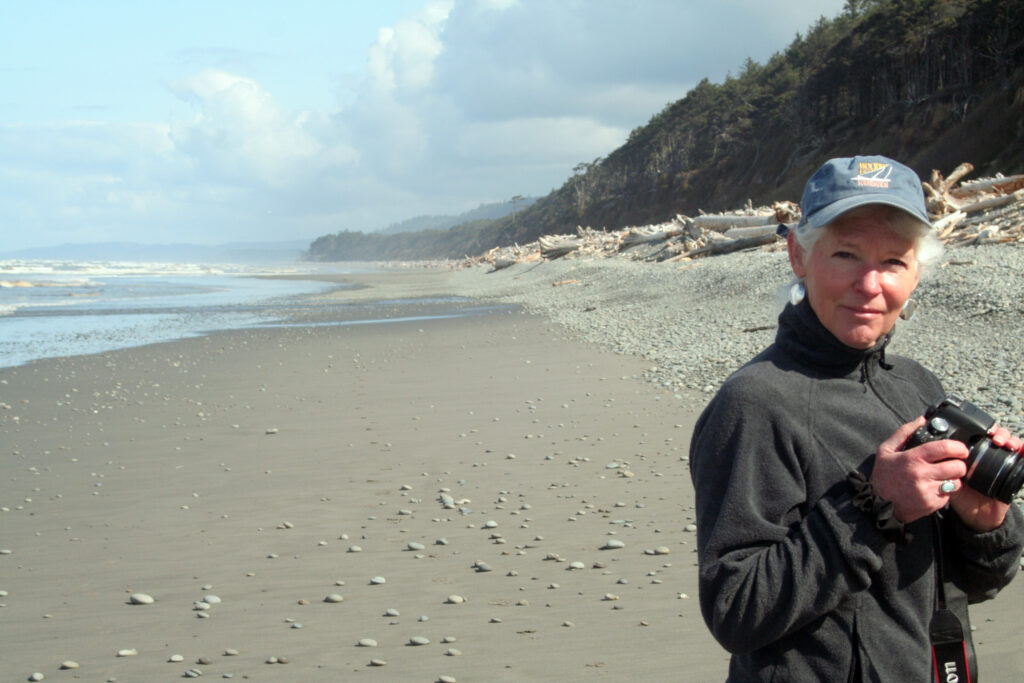
Thanks for reading this week – and the entire year for that matter.
Larry Eifert
Here’s my Facebook fan page. I post lots of other stuff there.
Click here to go to our main website – with jigsaw puzzles, prints, interpretive portfolios and lots of other stuff.
Nancy’s web portfolio of stunning photography
And here to go to Virginia Eifert’s website. Her books are now becoming available as Amazon Kindle books.

